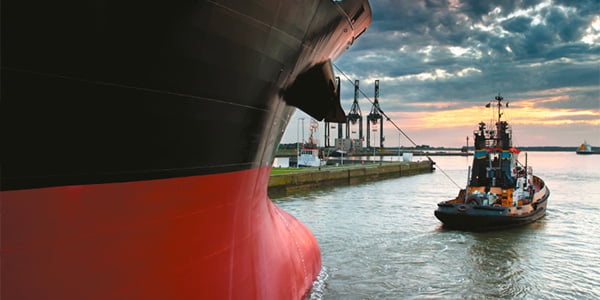4G & 5G Connectivity on board
Extend Your Vessel’s Reach with High-Speed Coastal Networks
Get a quote todayDefinition & Benefits
4G (LTE) and 5G cellular connectivity brings terrestrial grade broadband to vessels operating in coastal and near‐shore waters. By leveraging marine-optimised antennas and routers, ships and yachts can enjoy:
- Broad Coverage: Standard cellular reaches 10–20 NM offshore; specialised high-gain antennas and lower-frequency LTE bands can extend that to 30 NM or more, with emerging 5G pilot networks pushing beyond 50 KM under optimal conditions.
- High Availability: Multiple carrier roaming and dual-SIM routers ensure ≥ 99% uptime in covered zones.
- Low Latency & High Throughput: 4G delivers 50–100 ms latency and 50–300 Mbps speeds near shore; 5G can reduce latency below 20 ms and support gigabit‐class downloads for real-time applications.
- Cost Efficiency: Cellular service plans often cost a fraction of satellite airtime for comparable data volumes in coastal regions.

Installation & Integration
Antenna Selection & Placement: High-gain MIMO antennas are mounted on the radar mast, arch, or spreaders. Separation ≥ 0.5 m between antennas to prevent interference.
Network Configuration: VLANs and QoS to prioritise critical systems (ECDIS, VoIP). Hybrid failover: automatic switching between 4G/5G, VSAT, and marina Wi-Fi.
Router & Cabling: Rugged dual-SIM 4G/5G routers with PoE ports, GPS, and WAN interfaces. Marine-grade LMR200/400 cabling for minimal signal loss.
Commissioning & Training: Link testing, speed validation, and coverage verification. Crew training on router management, SIM provisioning, and basic troubleshooting.
Technical Performance
- Speeds & Latency:
- 4G LTE: up to 300 Mbps download, 50–100 ms latency
- 5G NR: up to 1 Gbps+ download, < 20 ms latency
- 4G LTE: up to 300 Mbps download, 50–100 ms latency
- Reliability:
- Dual-SIM redundancy and carrier aggregation for seamless handoffs
- Weather-resilient hardware rated for –30 °C to +60 °C operation
- Dual-SIM redundancy and carrier aggregation for seamless handoffs
- Coverage Distance:
- 4G: typically 10–20 NM, extendable to 30 NM+ with optimised antennas
- 5G: pilot deployments up to 27 NM, with potential for 50 KM under optimal conditions
Cost Expectations
Hardware and installation typically range from $1,000 to $5,000, depending on antenna size and router capabilities. Monthly data plans vary by provider and data allowance, but Coastal Cellular often starts under $200/month for moderate usage. For vessels with higher bandwidth needs or extended coastal operations, plans can rise to $500–$1,000+/month.
Ensure the optimal balance between performance, reliability, and cost.
Use Cases
- Operational Communications: Real-time voyage data exchange, weather updates, and ECDIS chart downloads.
- Crew Welfare: Video calls, streaming services, and social media access to boost morale.
- Passenger Services: Wi-Fi for guests on ferries, yachts, and cruise tenders.
- Hybrid Networks: Cost-effective coastal connectivity with seamless handover to VSAT or Starlink offshore.
- IoT & Remote Monitoring: Low-latency telemetry for engine diagnostics, hull stress sensors, and environmental monitors.

Regulatory & Compliancce
Spectrum Licensing: Must comply with national maritime cellular regulations and roaming agreements.
EMC & Safety Standards: Equipment certified to IEC 60945 and ITU-R EMC limits for shipborne electronics.
Cybersecurity: VLAN segmentation, encrypted VPN tunnels, and regular firmware updates to mitigate network threats.
FAQS
Can I use a single SIM card to access multiple cellular networks for broader coverage?
Yes. Dual-SIM routers can be configured with cards from different providers (or roaming partners) to automatically switch between networks based on signal strength and data-plan availability, ensuring you stay connected along varied coastlines.
How do weather and sea state affect 4G/5G signal quality offshore?
Heavy rain, fog, and sea spray can attenuate higher frequency bands, reducing signal strength. Properly elevated and sealed marine antennas, along with adaptive modulation in modern routers, mitigate these effects to maintain reliable connectivity in most conditions.
Is static IP addressing and advanced firewalling available for critical applications?
Absolutely. Marine 4G/5G solutions support public or private static IP allocations and built-in firewall/NAT rules, allowing you to host services on board (VPN servers, remote-access tools) and segment traffic for enhanced security.
How can I monitor and control my data usage to prevent overage charges?
Built-in router dashboards and management portals let you set usage thresholds, generate alerts, and apply bandwidth caps or QoS policies, so you can prioritise essential systems and avoid unexpected fees.